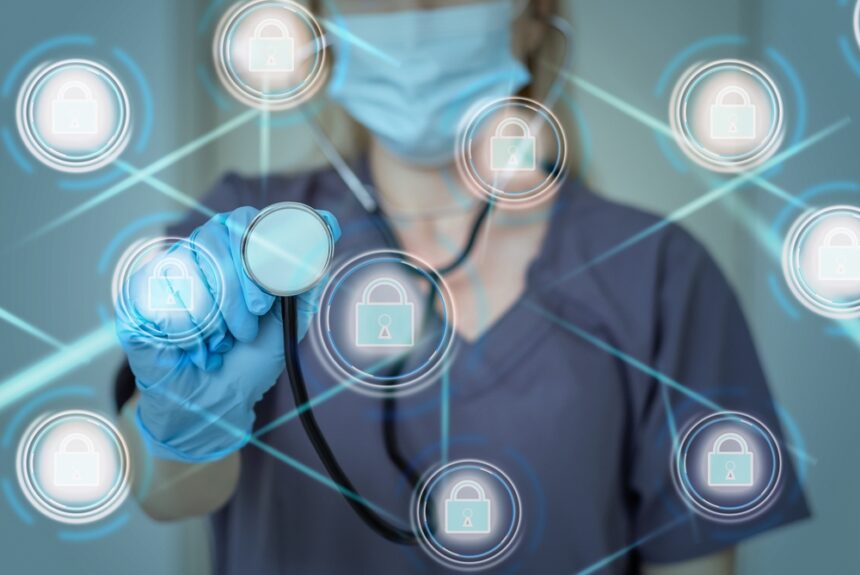The health industry faces immense cybersecurity challenges. As technology advances, so do the risks. Patient data is highly sensitive and valuable on the dark web.
Medical systems have vulnerabilities that hackers can exploit. Attacks could disrupt operations and endanger lives. Proactive defense is an absolute necessity. Follow these tips to fortify your cyber defenses.
Use Strong Passwords
Weak passwords are like unlocked doors inviting hackers inside. Complexity is key—random characters, numbers, special symbols. Length matters too—go for 15+ characters at a minimum. Also turn on two-factor authentication for an extra barrier. Biometrics like fingerprint scanners help too. Use a good password managers such as 1Password to generate and remember strong secrets. Change defaults and avoid common words. Biometrics like fingerprint scanners help too. Enable password managers to generate and remember strong secrets. Change defaults and avoid common words.
Update Your Software
Outdated software is a giant neon target for cybercriminals. They hunt for known unpatched bugs to break in. Adopt a mindset of rapid response on updates. Prioritize any that fix security flaws. Automate patches if you can, or schedule regular times to manually update.
Test patches before deployment. Legacy systems may need extra precautions. Cloud-based services offload this burden.
Backup Your Data
No backups means you are one ransomware attack away from total paralysis. Air-gapped, encrypted backups can be your lifeline if disaster strikes. Test restoration regularly to ensure reliability. Geographic redundancy helps fend off localized disasters. Consider immutability to prevent corruption. Weigh cost vs risk of various backup services and software. Practice rapid emergency restoration procedures.
Educate Your Staff
Your team is your first line of defense. Training sharpens their cybersecurity wits. Verify understanding rather than just mandating compliance. Promote a culture of security awareness and vigilance against threats. Set guidelines on safe internet usage, email links, device access, suspicious activity reporting and more. Make cyberhygiene second nature through reminders and leading by example.
Manage Third Parties
The web of third parties—contractors, vendors, suppliers—expands your digital attack surface and vulnerabilities drastically. Vet them thoroughly upfront and embed security in contracts. Strictly limit access and monitor activity. Revoke credentials immediately after work is done. Audit frequently for compliance. Share information cautiously as it can propagate outward. Know where your data is flowing continually.
Filter Network Traffic
Your network perimeter is like a border checkpoint—inspect all traffic thoroughly. Deploy layered defenses to filter and block known bad sites, IPs, domains. Prevent malware from hitchhiking in. Authentication and encryption create secure tunnels. Whitelist only authorized apps and protocols. Active monitoring helps catch stealthy threats. Contain devices and accounts to limit lateral movement.
Protect Endpoints
The endpoints—devices, computers, kiosks, servers—are where the data lives. Harden them with firewalls, antimalware, disk encryption and patched software. Disable unnecessary features and ports to shrink attack surface. Enforce strong passwords, regular resets and inactivity timeouts. Endpoint Detection and Response (EDR) can sniff out subtler intrusions. Control device access and connections. Wipe lost or stolen devices instantly.
Control Access
Access control limits data exposure. Immediately revoke ex-employee credentials—an overlooked risk. Require strong passwords and ensure they are changed frequently. Implement multifactor authentication and identity and access management technologies, such as the ones developed by GuidePoint Security, to manage user identities and control their access to resources. Additionally, issue temporary and restricted credentials to contractors or vendors when needed and disable inactive accounts after long periods of disuse. Furthermore, ensure you restrict access to a bare minimum.
Monitor Activity
Vigilance requires proactively hunting threats, not just waiting to react. Collect and analyze logs to establish baselines and uncover anomalies. Use intrusion detection systems and honeypots. Perform penetration testing to find weaknesses. Install alarms and alerts for real-time notifications. Assume some elements are already compromised and dig deeper to confirm safety.
Develop Incident Response Plans
Despite best efforts, some incident is inevitable so prepare for the worst. Outline steps to detect, contain and eradicate threats plus restore operations. Designate and train a response team with clearly defined roles. Run practice drills to sharpen responses and identify process gaps to correct. Report quickly as legally required. After-action reviews fuel continual improvement of response plans.
Consider Cyber Insurance
Cyber insurance can offset costs of recovery from an incident. Policies cover expenses for investigation, notifications, PR, legal liabilities, ransomware payments and business losses. However, understand exclusions and coverage limits—cyber insurance is not a magic wand. Work with brokers to secure sufficient coverage scaled to your risks. In parallel, invest in boosting your self-defenses too.
Advancing technology multiplies risks. Ransomware and data theft threaten patient safety and trust. Although daunting, with proper persistence, staff education and expert help, you can secure your systems. Patients’ well-being depends on your cybersecurity vigilance. Stay ahead of the threats.







